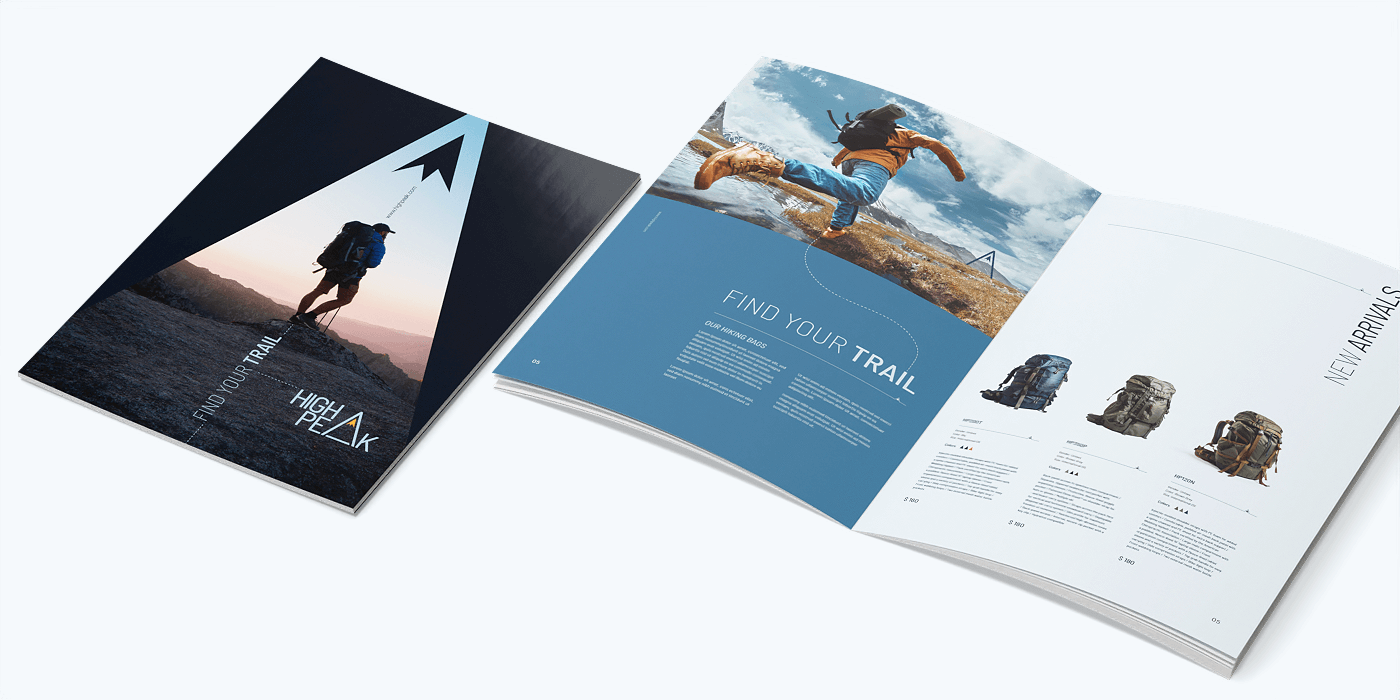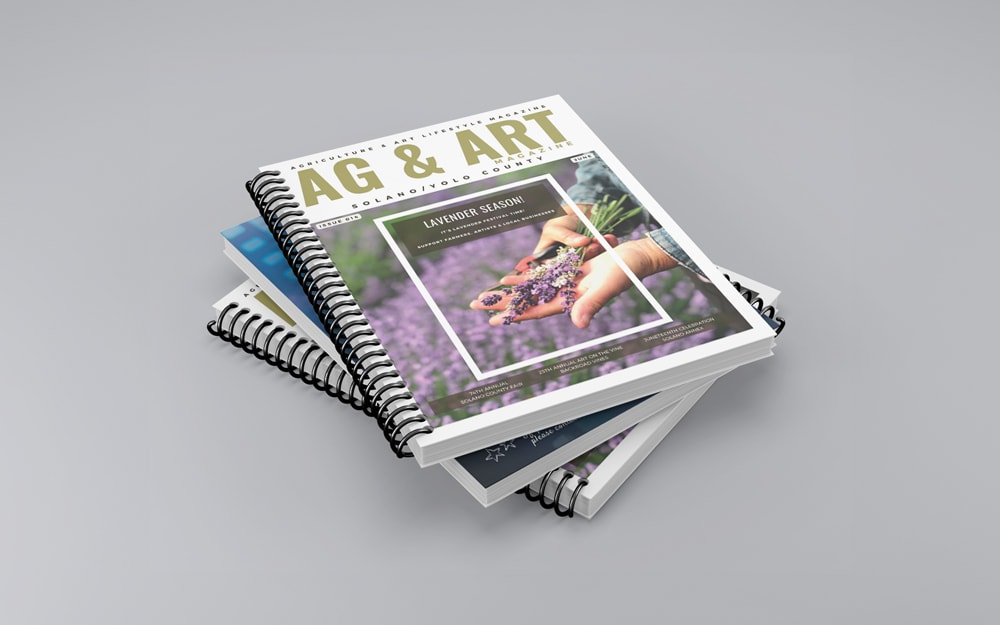The Vital Guide to Understanding Pamphlet Printing Options and Techniques
The process of pamphlet printing entails multiple factors to consider that can significantly impact the end product. From choosing the appropriate layout and dimension to understanding the subtleties of binding approaches, each option plays a vital function. Furthermore, variables such as paper supply and printing strategies additional influence the effectiveness of the pamphlet. As one browses these options, it ends up being critical to realize how they adjoin and what that suggests for the general end result.
Recognizing Pamphlet Formats and Sizes
When thinking about brochure printing, comprehending the various layouts and sizes readily available is necessary for attaining the preferred presentation. Brochures can be produced in many layouts, including saddle-stitched, spiral-bound, and perfect-bound, each offering unique advantages. Common dimensions vary from standard letter (8.5 x 11 inches) to smaller options like A5 (5.8 x 8.3 inches), permitting flexibility based on material and target audience.Selecting the suitable dimension can affect both the design and viewers engagement. Bigger dimensions could fit aesthetically driven material, while smaller sized styles might be extra mobile and user-friendly. Additionally, the number of pages affects the option of binding technique, as thicker booklets might need sturdier bindings. Inevitably, comprehending these elements enables an extra tailored method, ensuring that the final product straightens with the desired message and visual, improving the overall performance of the communication.
Picking the Right Paper Supply

Binding Methods: Factors To Consider and alternatives
When it comes to binding approaches for brochures, several choices are available, each with distinct benefits. Saddle stitch binding uses a cost-effective solution for thinner booklets, while perfect binding strategies supply a more sleek try to find thicker magazines. Wire-O binding stands out for its durability and simplicity of usage, making it optimal for records that need versatility.
Saddle Stitch Binding
Saddle stitch binding supplies a cost-efficient and sensible service for assembling pamphlets, making it a popular option amongst authors and companies. This binding technique involves folding sheets of paper in fifty percent and stapling them along the fold line, developing a organized and cool appearance. Usually ideal for pamphlets with a lower web page count, saddle stitching is ideal for magazines, brochures, and instructional materials. The simpleness of this technique enables fast manufacturing and is often favored for short runs or advertising things. It is vital to note that saddle stitch binding may not be appropriate for thicker booklets, as the spinal column may not hold up under increased weight. Overall, it continues to be a dependable alternative for several printing tasks.
Perfect Binding Techniques
Perfect binding is a widely made use of method that offers a refined and specialist coating to pamphlets and magazines. This approach involves gluing the pages with each other at the spine using a solid adhesive, enabling for a tidy side and the capability to hold a bigger variety of pages contrasted to saddle sewing. Perfect binding is particularly ideal for thicker brochures, such as directories and yearly reports, where a durable, level spinal column is preferred. Furthermore, it offers the choice for a printed cover that can be developed to enhance visual appeal. Considerations such as page count, paper weight, and the planned use of the brochure should be taken right into account, as they can impact sturdiness and total quality.
Wire-O Binding Options
Wire-O binding, understood for its sturdiness and adaptability, provides an outstanding choice for booklets that call for easy page transforming and a professional look. This binding technique utilizes a series of steel loopholes that hold web pages safely, allowing them to exist flat when open. It is especially appropriate for handbooks, brochures, and presentations as a result of its durable nature. Wire-O binding is offered in different colors and diameters, fitting different web page counts and densities. Furthermore, it permits the incorporation of tabs and covers, boosting the booklet's total visual. Considerations for Wire-O binding consist of the option of cord shade, the dimension of the loopholes, and the extent of personalization desired, all of which can exceptionally affect the end product's look and functionality.
Digital vs. Offset Printing: Which Is Best for You?
When selecting a printing technique for pamphlets, comprehending the distinctions between digital and counter printing is crucial. Digital printing makes use of contemporary technology to create high-quality prints swiftly and affordably, making it optimal for short runs or jobs needing quick turnaround times. It permits for personalization, providing the ability to publish on-demand with minimal waste.In contrast, counter printing is a traditional approach that succeeds in producing big amounts with regular high quality. It involves moving ink from a plate to a rubber blanket, after that to the paper, which leads to precise details and dynamic colors. Nonetheless, balance out printing commonly calls for longer configuration times and is more economical for larger volumes.Ultimately, the selection between digital and balance out printing relies on job needs, budget, and desired quantity. For small, time-sensitive jobs, electronic may be the most effective option, while offset might be better for larger, premium manufacturings.

Creating Your Brochure: Tips and Best Practices
When developing a pamphlet, careful attention to layout, font selection, and color usage can substantially enhance its performance. A well-structured layout overviews the reader's eye, while proper font styles guarantee readability and share the wanted tone. Furthermore, efficient usage of shade can evoke emotions and highlight essential information, making the overall layout more impactful.
Choosing the Right Format
Just how can one successfully pick the best layout for a booklet? It is important to assess the booklet's purpose and target audience. A clean, organized design enhances readability and involvement. Using a grid system can help in browse around these guys straightening components continually, producing a professional look. In addition, incorporating aesthetic hierarchy with differing sizes and positionings of photos and message can direct the reader's eye and highlight vital info. It is likewise vital to leave adequate white space, which stops congestion and enables for far better focus. Finally, checking different formats with mock-ups can supply insight right into just how the design does in real-world circumstances, making certain that the last item satisfies both visual and practical needs.
Picking Ideal Typefaces
An appropriate font style can significantly enhance the general layout of a pamphlet, complementing the format and enhancing the material's message. The selection of fonts should consider readability, particularly for body text, as it ensures the information is available to all visitors. Sans-serif typefaces are typically favored for digital formats, while serif fonts can lend a typical feel in printed materials. It's recommended to limit font choices to two or three to maintain aesthetic comprehensibility. Additionally, typeface dimension plays an important function; headings ought to be not overwhelming however distinct, while body message must be comfy for reading. When selecting fonts, alignment with the booklet's style and target market is necessary for efficient communication and visual allure.
Effective Use of Color
Shade works as an effective device in booklet design, leading and forming assumptions reader feelings. It can evoke sensations of depend on, enjoyment, or peace, relying on the tones selected. Developers need to take into consideration shade concept principles, making certain that the picked scheme aligns with the pamphlet's message and target audience. As an example, utilizing cozy colors like red and orange can develop urgency, while cooler tones like blue and eco-friendly foster tranquility.Additionally, contrast plays a crucial role; corresponding colors can enhance readability and aesthetic allure. Uniformity in shade usage throughout web pages better enhances brand identity and communication. Ultimately, efficient color application not only catches focus but also strengthens the booklet's objective, making it an essential facet of successful style.
Completing Touches: Coatings and Unique Effects
While lots of think about the content and design of a brochure one of the most vital elements, the completing touches, such as finishes and unique results, play a crucial function in improving its total allure. Coatings can provide protection and toughness, making certain that the pamphlet stands up to wear and tear. Matte surfaces offer a sophisticated, non-reflective surface area, while glossy finishes can make colors appear even more dynamic and appealing. Unique results, like embossing or aluminum foil marking, add a responsive dimension that can develop a remarkable impact. These techniques can highlight specific areas, accentuating vital information or producing aesthetic rate of interest. Furthermore, UV coating can give a high-shine coating that boosts the general look.Together, these ending up touches not only enhance the pamphlet's aesthetic yet additionally interact professionalism and trust and focus to information, ultimately leaving a lasting influence on the reader.
Expense Factors To Consider for Booklet Printing
Understanding the various price considerations for pamphlet printing is essential for organizations and services aiming to maximize their budget plans. Trick variables influencing costs include the option of ink, binding, and paper techniques. Better materials, such as superior paper or specialized inks, commonly raise the total expenditure. Furthermore, the dimension and web page matter of the brochure play a significant role; larger brochures call for even more resources and time to produce.Another vital consideration is the printing technique, whether digital or balanced out, as each has its own prices framework and suitability for different amounts. Services ought to also consider design expenses, which can vary based on intricacy and the usage of professional solutions. Inevitably, delivery and handling fees can look here add to the total, especially for large orders. By evaluating these components, companies can make informed choices that straighten with their financial capacities while attaining the desired high quality in their published materials.
Regularly Asked Questions
What Are the Environmental Effects of Pamphlet Printing?
The environmental influences of pamphlet printing consist of deforestation from paper manufacturing, carbon emissions from transport, and waste generation from discarded materials - Booklet Printing. Lasting practices, such as using recycled paper and environment-friendly inks, can minimize these results
How Can I Make Sure Color Precision in My Pamphlet?
To assure shade accuracy in a brochure, one need to use adjusted screens, use specialist shade profiles, perform examination prints, and select premium printing services that use color matching and proofing alternatives for finest outcomes.
What Is the Common Turn-around Time for Booklet Printing?
The regular turnaround time for pamphlet printing varies relying on the intricacy and quantity - Booklet Printing. Usually, it ranges from a few days website here to two weeks, influenced by factors such as publishing techniques and completing needs
Are There Minimum Order Quantities for Booklet Printing?

Can I Print Booklets in Numerous Languages?
Printing brochures in numerous languages is feasible. Lots of printing solutions provide options for multilingual or multilingual formats, enabling reliable communication. Careful preparation warranties that design elements fit various languages without jeopardizing readability or aesthetics. Additionally, variables such as paper supply and printing techniques further affect the performance of the brochure. When considering pamphlet printing, understanding the numerous layouts and sizes available is important for achieving the desired discussion. When picking a printing approach for brochures, recognizing the distinctions in between digital and counter printing is vital. Furthermore, the size and page matter of the booklet play a considerable function; larger pamphlets need even more resources and time to produce.Another important consideration is the printing technique, whether electronic or balanced out, as each has its own rates structure and suitability for different quantities. The ecological effects of brochure printing include deforestation from paper manufacturing, carbon emissions from transport, and waste generation from disposed of materials.